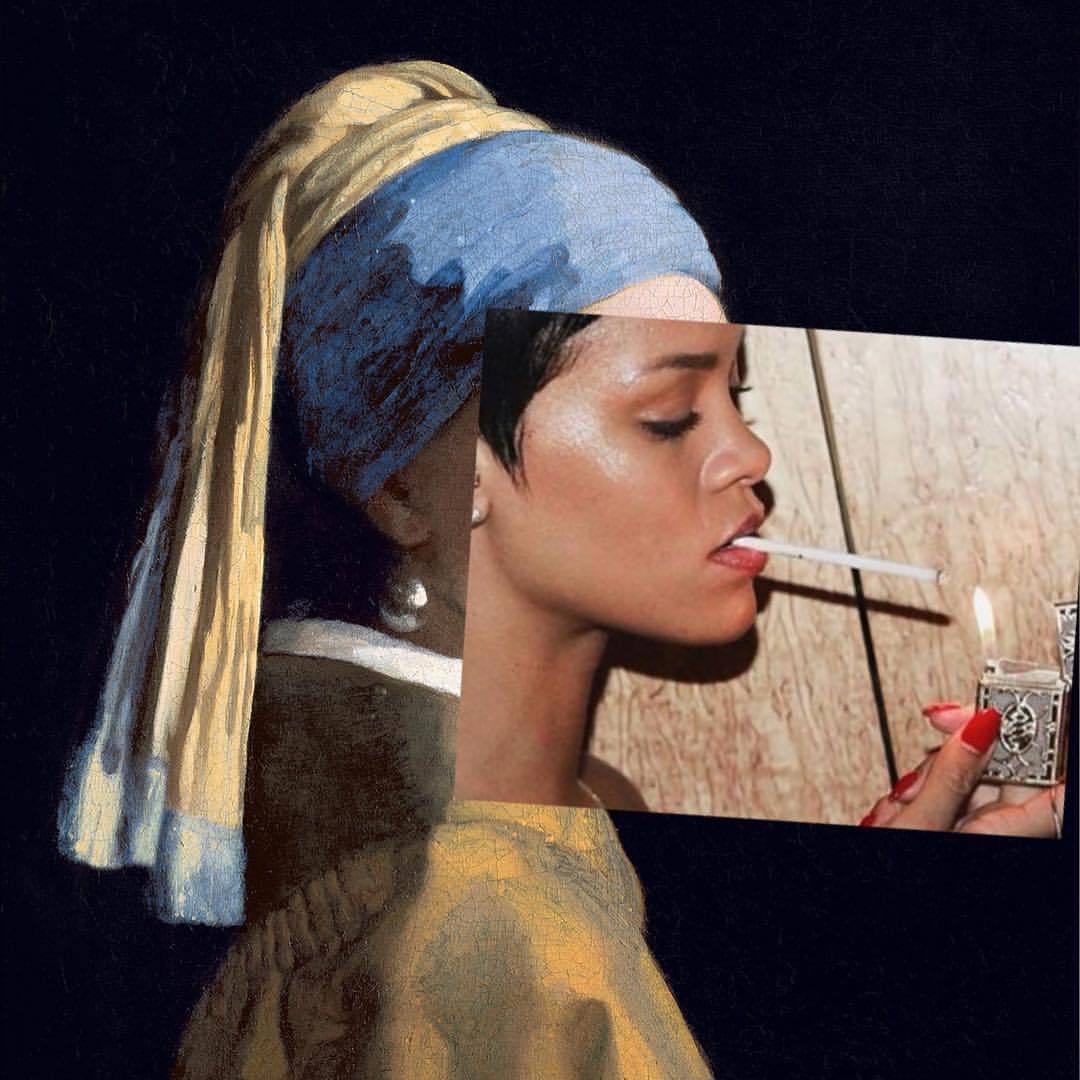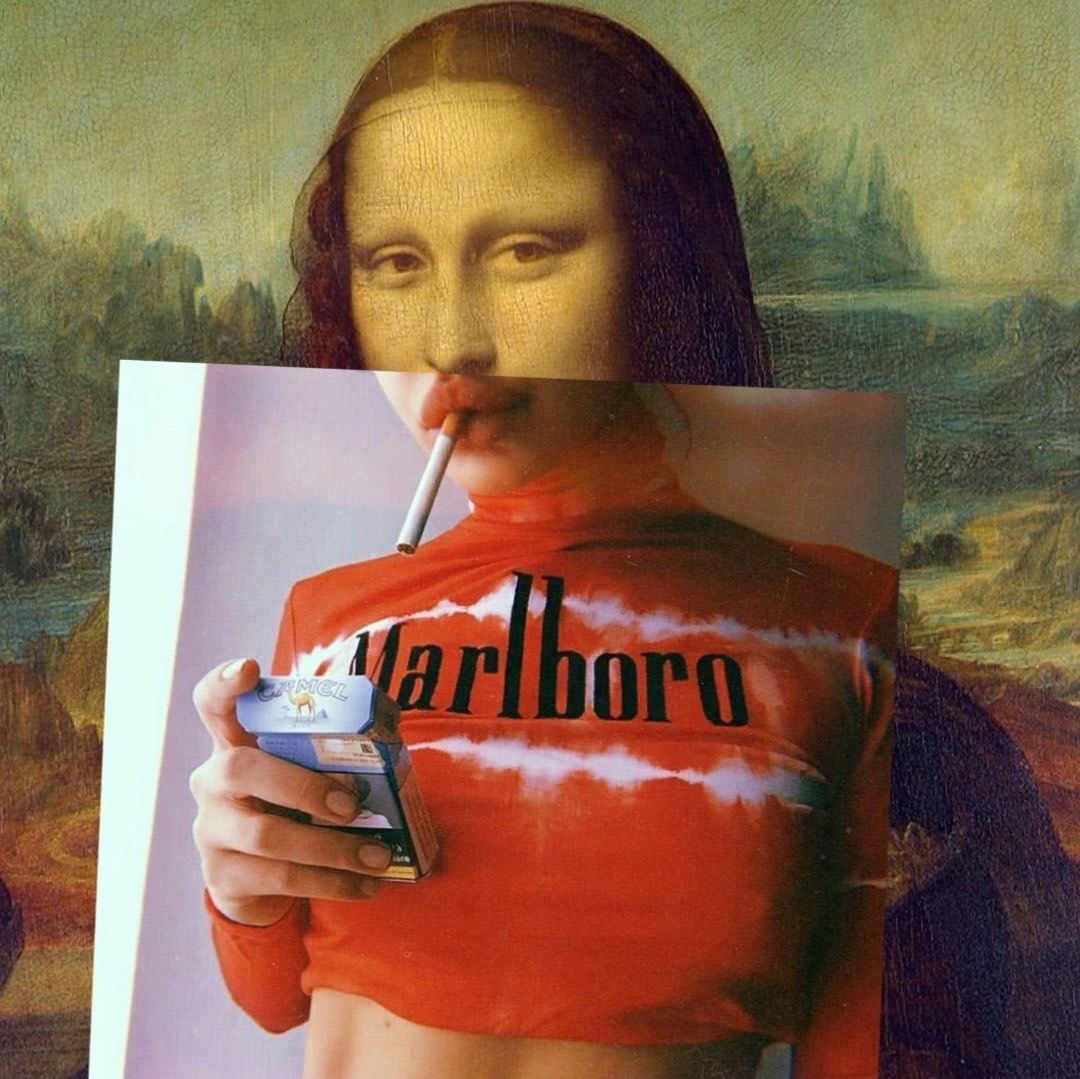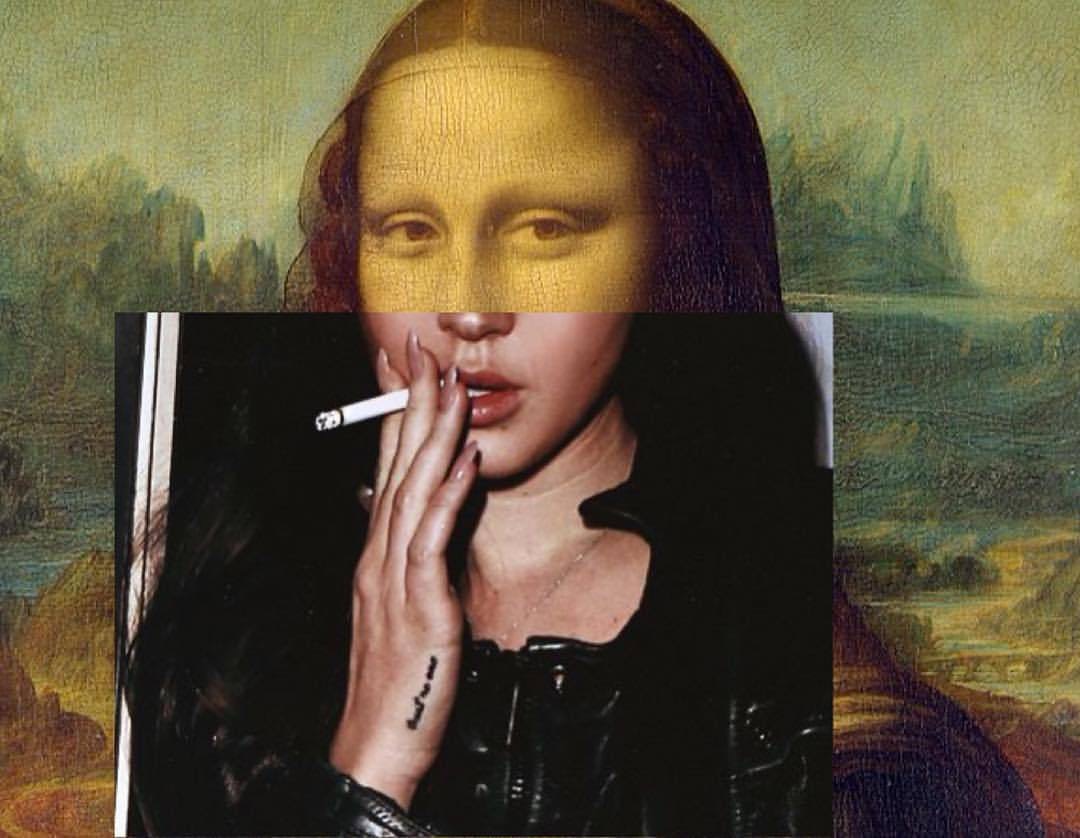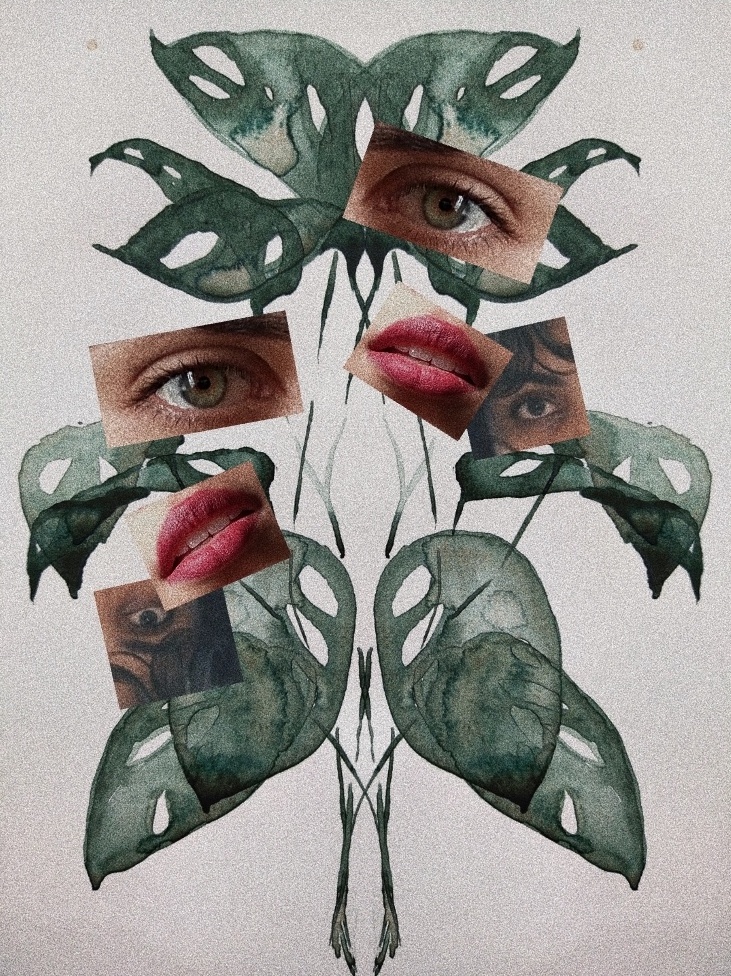Nirvana Kamala is an 18-year-old artist (although she’d hate you calling her that) from the Kurdish states. Her collages work primarily with the art of displacement. With a rich knowledge of art history and an active imagination, many of Nirvana’s collages have found praise in their careful subversion of gender and the female body. The paratext of how we receive many things about a work of art- it’s fame, its beauty, is struck down the moment this 18-year-old artist appears displaces even a single element in the composition of the painting. This is evident in her series on Mona Lisa- in which she, at one point, shows Mona Lisa smoking a cigarette, at another, dawning a Gucci shirt. In doing this, she participates and enters a very different set of relations in the perception of paintings, their “authors” and what their subjects have come to mean to us. Working primarily with Renaissance and early modern paintings, our short conversation with Nirvana is enclosed below.
Anandita: So, tell us about yourself. Where did you grow up, and what did you study? What made you take up art?
Nirvana: I’m 18 years old and I’m still in high school. I’m a painter, primarily. I do watercolors and oil and I took up making collages 2 years ago after seeing some popular collage works on Tumblr and I wanted to make my own and collect them. In one place. That is all, really. My art is quite self-sustained.
Anandita: Your work is very innovative. In some sense, you break the spatiotemporal barrier of art- because you take work from a different period in history and then you add the contemporary to it. What inspired you to do this, and which artists do you draw this influence from?
Nirvana: A lot of wonderful artists do collage but I don’t really get inspiration from anyone. I love art history and find art so subjective and I think how much art has changed throughout time proves that art can be anything you want and I think my collages show that. I like to show how much art evolves throughout the centuries and reinterpreting artworks.
I do not ever refer to my collages as art because I don’t own the photographs, nor do I make the paintings. I am merely an inspector who’s changing a little detail. I’m just observing art I like and mixing it with modern elements I like, to show how various and subjective art can be. I am not an artist because of my collages.
Anandita: Ah. I understand. But, how do you read your interjection into the history of these paintings- as a female viewer and creator, in some sense, even if the word artist does not fit?
Nirvana: I love painting women and I love looking at paintings and sculptures and photos of women. The female body is definitely my favorite subject because it’s so beautiful and unique to me. I love to show female beauty, I come from a country where women are oppressed and their voices are shut down and art, in general, isn’t valued let alone the art of women, so to me it’s nice that I, a young Kurdish girl can make”art” collages that go viral worldwide. I think that in itself is a big change.
Anandita: When you work, what makes you decide which element to displace? For instance, in the Mona Lisa portrait, you at different times provocatively inserted the consumption of fruit, Mona Lisa displaced with an image of modern womanhood with the Gucci shirt and the cigarette image as well. What made you choose these different elements, at different times, while working with the same painting?
Nirvana: The Mona Lisa is one of my favorite paintings to work with. There’s the technical aspect, the angle of her face and the width and length of the painting make it easy to mix it with a lot of photos, and also because it is the world’s most known painting, yet we still don’t really know that much about Mona Lisa herself. In her time female sexuality, female beauty, women’s rights, the representation and vision of women was COMPLETELY different, I think we perceive her as a mysterious or reserved woman, and she was well respected, I like to sexualize her or make her more “badass” once again, to show how things change overtime. Also with my other collages, for example I have one with Michelangelo’s “The birth of Adam”. Hands touching, but a cigarette or a joint is in one of the hands. For Michelangelo, religious art was a way to reach a divine universe and I think it’s refreshing or funny to replace a divine gesture with something more modern like a cigarette or a spliff.
Anandita: In your paintings, then, there is humour but also subversion. As an artist, how do you read the role of humour in making a statement? Have you received any negative response to your work, because of what you do to these paintings?
Nirvana: I do try to incorporate humor in some of them, for example, one of the Virgin Mary wearing a shirt that says “I am so a virgin!” Or one with a religious woman being gagged, I am thankful 99.99% of the comments and feedback I get is all positive. People have gotten annoyed with me when I’ve mixed pictures of Jesus/Mary or Greek gods with sexual imagery. I understand that perspective completely. It’s personal.
Anandita: Where do you see your work going, as an artist? Are there any future projects we may look forward to?
Nirvana: I love what I do and I’m just so thankful for the support that’s all! Thank you for giving me the chance to talk about my collages with you.
All photos by Nirvana Kamala.
Text by Anandita Thakur.








